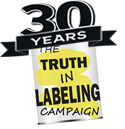MSG
Manufactured vs Natural Glutamic Acid
Ingredient Names Used to Hide MfG
 What is MfG?
What is MfG?
MfG stands for manufactured free glutamate. It’s the man-made, toxic ingredient contained in monosodium glutamate -- an amino acid called glutamic acid or glutamate that is added to processed foods. MfG-sensitive consumers know it as the substance that triggers adverse reactions such as migraine headache, asthma, skin rash, irritable bowel, seizures, and heart irregularities. It also causes brain damage and gross obesity, infertility, and other endocrine disorders.

There are over 40 different ingredients in processed foods that contain MfG. MfG is produced when the chains of amino acids in protein are broken, and glutamic acid becomes free, or when monosodium glutamate is produced by bacterial fermentation. MfG is processed/manufactured free glutamate that has been made in food processing or chemical plants and/or created by fermentation. In every case, the free L-glutamate, the flavor enhancing component of the free glutamate glutamate that has been manufactured or created by fermentation, is accompanied by unwanted byproducts of manufacture referred to as impurities One of those impurities is D-glutamic acid (D-glutamate).
The point to remember is that man-made free glutamate contains both L-glutamate and D-glutamate. In contrast, the glutamate in unadulterated fruits, grains, vegetables, and in the human body, isn’t manufactured. It's L-glutamate only.
MfG can be produced from fruits, vegetables, grains, fish, meat, or poultry that contain protein, or from bacteria. When used in pharmaceuticals it is called a drug. When used in food, it is called a food additive.
Unprocessed/unadulterated/unfermented protein in any meat, fish, fruit, grain, vegetable etc., contains L-glutamate but no D-glutamate.Prior to 1957, monosodium glutamate was produced by extracting glutamic acid from protein. Some monosodium glutamate is still made that way. But since 1957, monosodium glutamate has been produced using genetically modified bacteria (genetically modified organisms or GMOs), that secrete glutamic acid through their cell walls. Glutamate is its principal ingredient, and its glutamate is manufactured (MfG).Unprocessed/unadulterated/unfermented protein in any meat, fish, fruit, grain, vegetable etc. does not contain MfG.
Unprocessed/unadulterated/unfermented mushrooms and tomatoes contain L-glutamate, but they do not contain D-glutamate. They do not contain MfG.
The key to understanding MfG lies in understanding six facts:
1) MfG is a product (something manufactured or processed), not a substance found in nature.Ingredients that contain MfG are often added to processed foods. MfG can also be generated during a product’s processing.2) Regardless of the way in which it is produced, MfG contains unwanted by-products of production -- substances referred to as impurities.
3) MfG causes adverse reactions in people who ingest amounts that exceed their tolerances for the substance.
4) Unadulterated, unprocessed, unfermented protein, which contains glutamate does not cause adverse reactions.
5) MfG causes brain damage with subsequent endocrine disorders and adverse reactions when fed in quantity to the very young, whose blood-brain barriers are not yet fully developed.
6) Glutamate bound up in protein with other amino acids when fed to the very young, does not cause brain damage, no matter how much is ingested.

